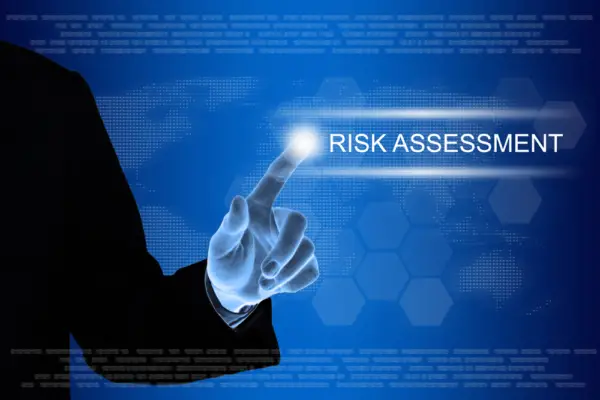The ISO 13485:2016 Medical devices risk assessment template is an invaluable tool for organizations in the medical device industry. It helps them identify and manage risks associated with their products and processes while ensuring compliance with the ISO 13485 standard.
Research has shown that a structured risk assessment can reduce the potential harm to patients and users while helping organizations make more informed decisions. Organizations can benefit from improved risk management capabilities and advanced decision-making processes by following the standardised template.
A step-by-step process is provided to guide organizations through the ISO 13485:2016 risk assessment. This includes identifying potential risks, assessing their severity and likelihood, and implementing appropriate control measures. With a successful risk assessment, organizations can achieve a higher level of product safety and regulatory compliance.
Furthermore, the template helps organizations streamline their processes, saving them time and money in the long run. According to a recent survey, companies have reported up to a 30% reduction in costs due to utilizing the ISO 13485 risk assessment template.
The ISO 13485 risk assessment template is an essential tool for organizations in the medical device industry. It helps them meet the ISO 13485 standard and improves their risk management capabilities and decision-making processes. With the right implementation, organizations can benefit from improved product safety, regulatory compliance, and cost savings.

Purpose of the ISO 13485 Risk Assessment Template
The ISO 13485 Risk Assessment Template serves several purposes:
- Assisting organizations in the medical device industry: The template is specifically designed to help organizations in the medical device industry conduct risk assessments. It provides a standardized framework for manufacturers, suppliers, and service providers of all sizes and types.
- Structured approach for identifying, evaluating, and mitigating risks: The template offers a structured approach that guides organizations in identifying potential risks associated with developing, manufacturing, and distributing medical devices. It helps them evaluate the severity of these risks and determine appropriate mitigation measures.
- Applicability throughout the product lifecycle: The template can be used at various stages, from the initial design and development to manufacturing, distribution, and post-market activities. This ensures that risks are continuously assessed and managed throughout the entire lifecycle of the medical device.
Providing a standardized and systematic approach to risk assessment, the ISO 13485 Risk Assessment Template helps organizations in the medical device industry ensure the safety and effectiveness of their products.
It supports compliance with regulatory requirements and promotes a proactive approach to risk management.
Scope and Applicability of the Risk Assessment Template
The applicability of the Risk Assessment Template can be comprehensively evaluated by considering its scope. The ISO 13485 Risk Assessment Template is designed to assist organizations in identifying and managing risks associated with medical device manufacturing.
Its applicability extends to various stages of the manufacturing process, including design, development, production, installation, and servicing. The template provides a systematic approach for identifying potential hazards, assessing risks, and implementing appropriate control measures.
Using this template, organizations can ensure compliance with ISO 13485 requirements and improve the safety and effectiveness of their medical devices. The table below highlights the main features of the Risk Assessment Template and its relevance to different stages of the manufacturing process:
| Stage of Manufacturing Process | Relevance of Risk Assessment Template |
|---|---|
| Design | Provides a framework for identifying potential hazards and assessing risks during the design phase. |
| Development | Assists in evaluating and mitigating risks associated with the development of medical devices. |
| Production | Helps identify and address risks related to the production process, ensuring consistent quality. |
| Installation | Facilitates the identification and management of risks during the installation of medical devices. |
| Servicing | Enables organizations to assess and mitigate risks associated with servicing and maintenance activities. |
Organizations can use the ISO 13485 Risk Assessment Template to ensure a comprehensive and contextually relevant risk assessment approach throughout manufacturing.
Risk Analysis Process
The risk analysis process involves several key points.
Firstly, identifying and categorizing risks are essential to understanding and assessing potential hazards.
Secondly, estimating the probability of occurrence and severity of harm allows for a better understanding of the potential impact of these risks.
Additionally, assessing the effectiveness of existing controls for reducing risks helps in identifying areas of improvement.
Setting criteria for an acceptable risk level and developing a risk management plan are crucial steps in risk analysis.
Identification and Categorization of Risks
Identification and categorization of risks in the context of ISO 13485 is a crucial step toward ensuring the effectiveness of a risk assessment process. To achieve this, medical device manufacturers should follow a systematic approach that involves the following steps:
- Identify hazards: This involves identifying potential sources of harm associated with the medical device throughout its lifecycle.
- Assess risk: Evaluate the likelihood and severity of harm from each identified hazard.
- Categorize risks: Group risks based on their severity and likelihood, allowing for prioritization and allocation of resources for risk management activities.
- Evaluate residual risk: Determine the level of risk that remains after implementing risk management measures, ensuring it is acceptable within the defined criteria.
Following this structured risk management process, manufacturers can effectively identify, evaluate, and categorize risks associated with their medical devices, leading to improved patient safety and regulatory compliance.
Estimating Probability of Occurrence and Severity of Harm
Estimating the probability of occurrence and severity of harm is crucial in the risk management. It allows medical device manufacturers to prioritize and allocate resources for risk management activities effectively.
ISO 13485, a standard for quality management systems in the medical device industry, provides guidelines for conducting risk assessments using a template. The template aids in systematically identifying and categorizing risks and estimating their probability of occurrence and severity of harm.
Assessing the likelihood of a risk event happening and the potential harm it could cause, manufacturers can determine which risks require immediate attention and allocate resources accordingly. This ensures that the most significant risks are addressed first, enhancing patient safety and overall product quality.
The risk assessment template facilitates a structured approach to risk analysis and management, promoting consistency and thoroughness in the evaluation process.
Assessing the Effectiveness of Existing Controls for Reducing Risks
An in-depth analysis of the existing controls is conducted to evaluate the efficacy of current measures in mitigating risks, examining their impact in reducing the probability of harm and the severity of potential consequences.
This evaluation is an essential part of the risk assessment process as it allows organizations to determine the effectiveness of their risk control measures.
The analysis involves assessing the existing controls in relation to the identified risks and their potential impact. A risk assessment matrix is often used to categorize risks based on their likelihood and severity. By comparing the controls in place to the identified risks, organizations can identify any gaps or areas where improvements are needed.
This information is then used to inform the development of a comprehensive risk management plan and report, ensuring that appropriate risk solutions are implemented.
Taking a risk-based approach and following a risk management framework allows organizations to thoroughly understand their risk profile and make informed decisions regarding risk control measures.
Setting Criteria for Acceptable Risk Level
Establishing clear criteria for acceptable levels of risk, organizations can determine the threshold at which risks become unacceptable and require further mitigation measures.
This is particularly important in ISO 13485, which provides a comprehensive risk analysis standard for medical device manufacturers. The standard emphasizes the need for a comprehensive risk management approach, including establishing risk acceptance criteria.
These criteria guide organizations to assess the acceptability of risks based on their potential impact and determine whether additional risk mitigation measures are necessary.
Organizations can use various risk management tools and techniques to evaluate risks and set criteria for acceptable risk levels. This ensures that organizations have a systematic and objective process for managing risks and making informed decisions regarding risk acceptance.
Adherence to these criteria, organizations can enhance risk intelligence and improve patient safety.
Developing a Risk Management Plan
Organizations can enhance their risk management practices by developing a comprehensive plan outlining the steps and procedures for identifying, evaluating, and controlling potential risks.
This plan, known as a risk management plan, is a crucial component of the ISO 13485 standard for medical device companies. It provides a structured framework for managing risks throughout the entire product lifecycle.
A well-developed risk management plan should include the following:
- Risk management files contain all relevant documentation related to risk management activities, such as risk assessments, risk control measures, and risk monitoring plans.
- Criteria for risk acceptability: The plan should define criteria for determining acceptable levels of risk, considering both the severity of the potential harm and the likelihood of its occurrence.
- Document templates: Standardized templates can help ensure consistency in risk management documentation.
- Benefit-risk analysis: The plan should systematically analyze the potential benefits and risks associated with the medical device.
- Process approach: A process-oriented approach should be adopted to ensure that risk management activities are integrated into the overall design and development process.
- Design control: The plan should outline how risk management activities are integrated into the design control process, from the initial concept to the final product.
Developing a robust risk management plan, organizations can effectively identify and control foreseeable hazards, thereby ensuring the safety and efficacy of their medical devices.

Implementing the Risk Management Plan
Implementing the risk management plan involves integrating risk management activities into the overall design and development process, from the initial concept to the final product, ensuring a systematic approach that enhances the safety and effectiveness of medical devices.
This implementation phase requires following the risk management plan and utilizing the ISO 13485 risk assessment template. The risk assessment template provides a structured framework for identifying, evaluating, and controlling risks associated with medical devices.
It helps document the risks, their potential impact, and the steps to mitigate them. By using this template, organizations can ensure that all relevant risks are identified and addressed consistently.
Implementing the risk management plan also involves regularly reviewing and updating the risk assessment to adapt to any changes in the context or technology.
Implementing the risk management plan and using the ISO 13485 risk assessment template, organizations can effectively manage risks and ensure the safety of their medical devices.
Monitoring and Reviewing the Plan to Ensure Adequate Controls are in Place
Monitoring and reviewing the plan to ensure adequate controls are in place is crucial for effectively managing potential risks and maintaining the safety and efficacy of medical devices. The following measures should be considered:
- Regularly assess the effectiveness of the risk management plan by reviewing its implementation and identifying any gaps or deficiencies.
- Monitor and analyze data on adverse events, complaints, and non-conformities to identify trends and potential areas of improvement.
- Conduct internal audits to verify the compliance of the risk management plan with ISO 13485 requirements and identify any deviations.
- Continuously update the risk assessment template based on new information, feedback, and changes in regulations or standards.
Actively monitoring and reviewing the plan, organizations can identify and address potential risks in a timely manner, ensuring the safety and effectiveness of their medical devices.
Documentation Requirements for Risk Assessment Template
Creating a comprehensive risk management file is essential in the documentation process for risk assessment templates. This file should contain all the necessary information for identifying, analyzing, evaluating, and controlling risks.
It should also include a detailed description of each phase of the risk management process, ensuring that all actions and decisions are thoroughly documented.
Creating a Comprehensive Risk Management File
Compiling a thorough documentation of all risk assessment activities is essential to develop a comprehensive risk management file in compliance with ISO 13485. This includes identification, analysis, evaluation, and control measures.
This documentation should be structured and organized to ensure that all relevant information is captured.
During the design phase, it is important to document hazards and potential risks associated with the medical device. This includes gathering information on the intended use, design specifications, and potential failure modes.
In the postproduction phase, it is necessary to document production and postproduction information, such as manufacturing processes and quality control measures.
The risk assessment template should guide the appropriate collection methods and formats for documenting these activities to ensure consistency and completeness in the risk management file.
Documenting All Phases of the Process
Careful and meticulous documentation of each phase is crucial to ensure a comprehensive and well-structured risk management file throughout a medical device’s development and production stages.
The documentation template should provide a clear, systematic framework for capturing all relevant information.
It should include detailed records of design reviews, design validation testing, design verification, and any additional postproduction information. This documentation aims to demonstrate the completeness of risk controls and provide guidance for implementation.
The documentation should also include relevant production and postproduction information, such as manufacturing processes, quality control measures, and any changes made during the production phase.
A distinct risk management file can be created by documenting all process phases, from design to production, ensuring a thorough and organized approach to device risk management.
Benefits of Using an ISO 13485 Risk Assessment Template
Utilizing an ISO 13485 Risk Assessment Template offers a range of advantages, evoking a sense of confidence and assurance in the audience. This template provides a systematic and comprehensive approach to conducting risk assessments in compliance with ISO 13485 standards.
Organizations can use this template to benefit from a standardized and structured process for identifying, evaluating, and mitigating risks. The benefits of using an ISO 13485 Risk Assessment Template can be summarized in the following table:
| Benefits | Contextually Relevant Article Section |
|---|---|
| Standardized approach | Documenting All Phases of the Process |
| Consistency across assessments | Documenting All Phases of the Process |
| Time and resource efficiency | Documenting All Phases of the Process |
| Enhanced risk management | Documenting All Phases of the Process |
Overall, the ISO 13485 Risk Assessment Template helps organizations streamline their risk assessment processes, ensuring compliance with ISO 13485 standards while maximizing efficiency and effectiveness.
How to conduct iso 13485 risk assessment
Conducting a risk assessment in accordance with ISO 13485 ensures a systematic and comprehensive approach to identifying, evaluating, and mitigating potential risks, ultimately enhancing the overall management of risks within an organization.
The ISO 13485 risk assessment template provides a structured framework for conducting risk assessments specific to the medical device industry. It helps organizations adhere to regulatory requirements and ensures that all potential risks associated with medical devices are identified and addressed.
The risk assessment process involves categorizing hazards into different hazard categories, such as biological, chemical, and physical hazards.
It is essential to conduct risk assessments throughout the entire lifecycle of a medical device, starting from the design stage.
This risk analyses aid in determining the necessary risk controls and mitigations to minimize potential harm to patients and users.
Frequently Asked Questions
Are there any specific requirements for conducting a risk assessment using the ISO 13485 Risk Assessment Template?
Conducting a risk assessment in accordance with ISO 13485 involves adhering to specific requirements. The standard outlines these requirements and guides how to effectively assess and manage risks within a medical device quality management system.
What common challenges are faced when implementing the ISO 13485 Risk Assessment Template?
Common challenges faced when implementing a risk assessment template include a lack of understanding of the template’s requirements, difficulty in identifying and assessing risks, inadequate documentation, and insufficient training on the template’s use.
Can the ISO 13485 Risk Assessment Template be used for all medical devices?
The ISO 13485 risk assessment template can be used for all types of medical devices. It provides a structured approach to identify and evaluate risks, ensuring compliance with regulatory requirements and promoting patient safety throughout the device’s lifecycle.
Are there any limitations or restrictions in using the ISO 13485 Risk Assessment Template for non-medical device industries?
The use of the ISO 13485 risk assessment template may be limited to the medical device industry due to its specific requirements and regulations. It may not be suitable or applicable for non-medical device industries.
Is updating the risk assessment regularly necessary, and how often should it be done?
Regularly updating the risk assessment is necessary to ensure its accuracy and effectiveness. The frequency of updates should be determined by the specific industry, its regulations, and the potential risks involved.

Conclusion
The ISO 13485 risk assessment template is a valuable tool in the medical device industry. It systematically identifies, evaluates, and mitigates the risks of developing and manufacturing medical devices.
Following the risk analysis process outlined in the template, organizations can ensure compliance with regulatory requirements and enhance the safety and effectiveness of their products.
The documentation requirements for the risk assessment template help maintain transparency and traceability of risk management activities.
The template offers numerous benefits and is a crucial component of quality management systems in the medical device industry.

Chris Ekai is a Risk Management expert with over 10 years of experience in the field. He has a Master’s(MSc) degree in Risk Management from University of Portsmouth and is a CPA and Finance professional. He currently works as a Content Manager at Risk Publishing, writing about Enterprise Risk Management, Business Continuity Management and Project Management.

